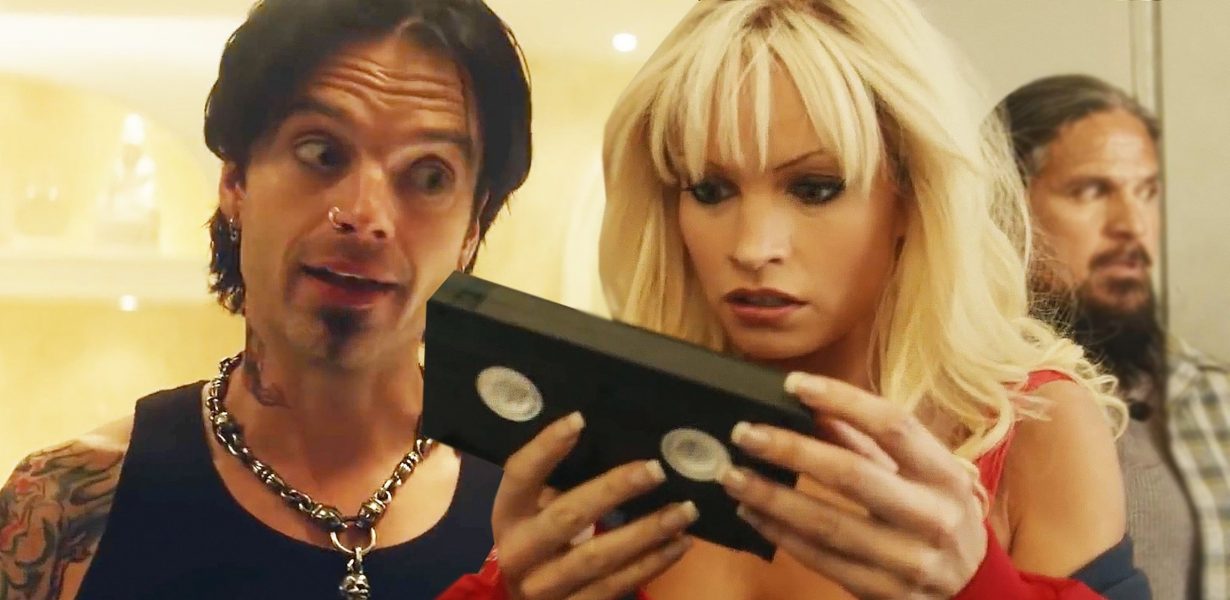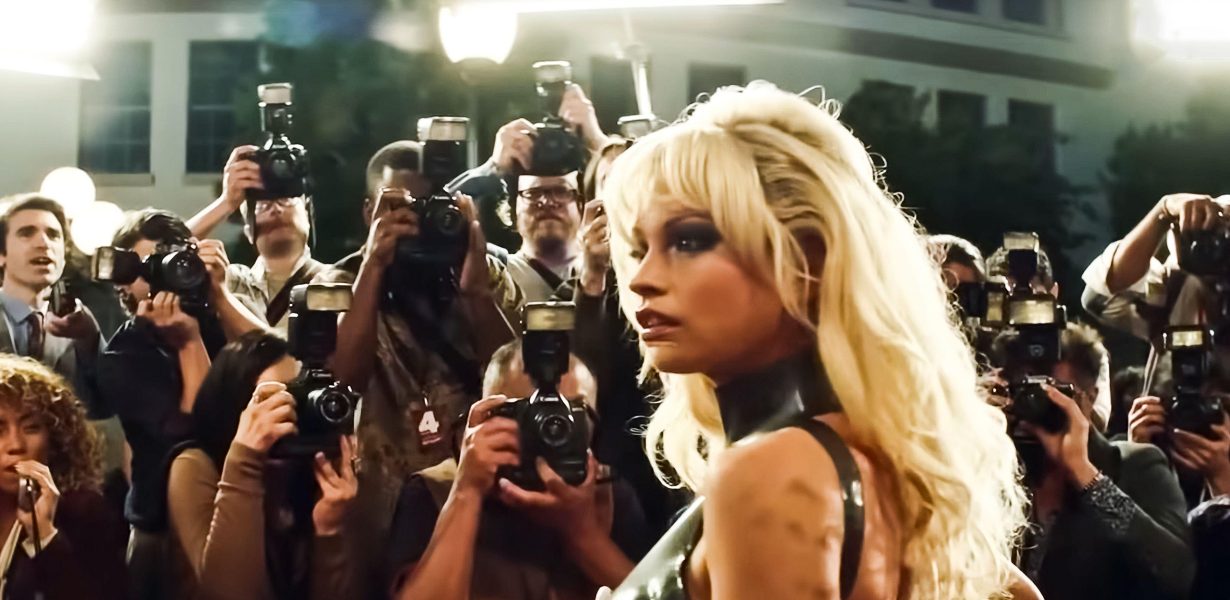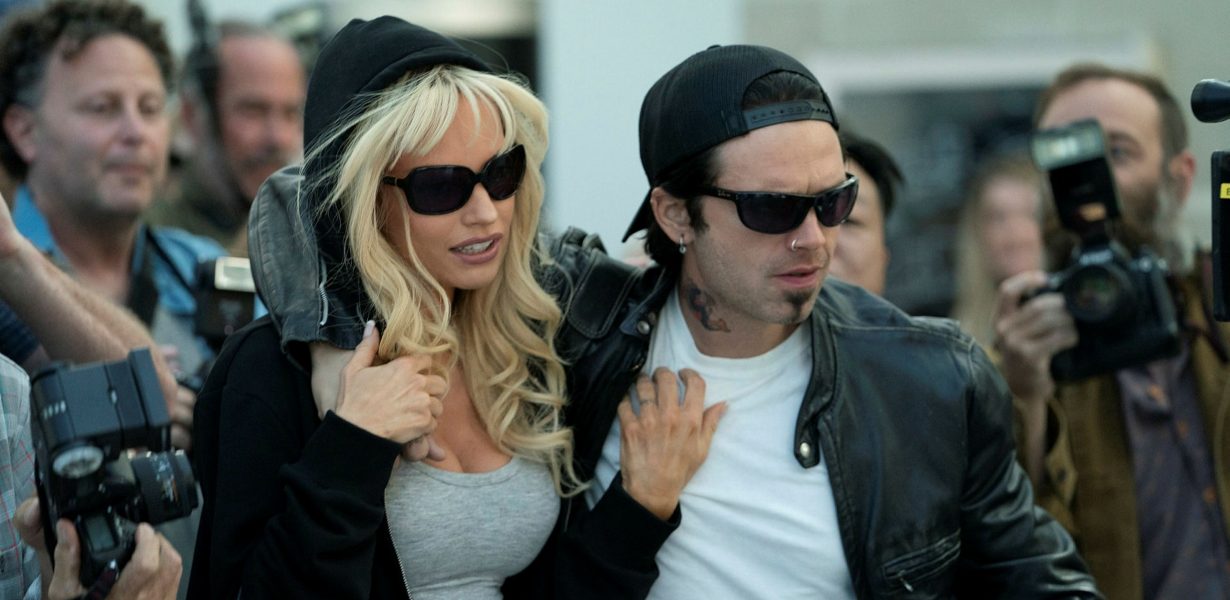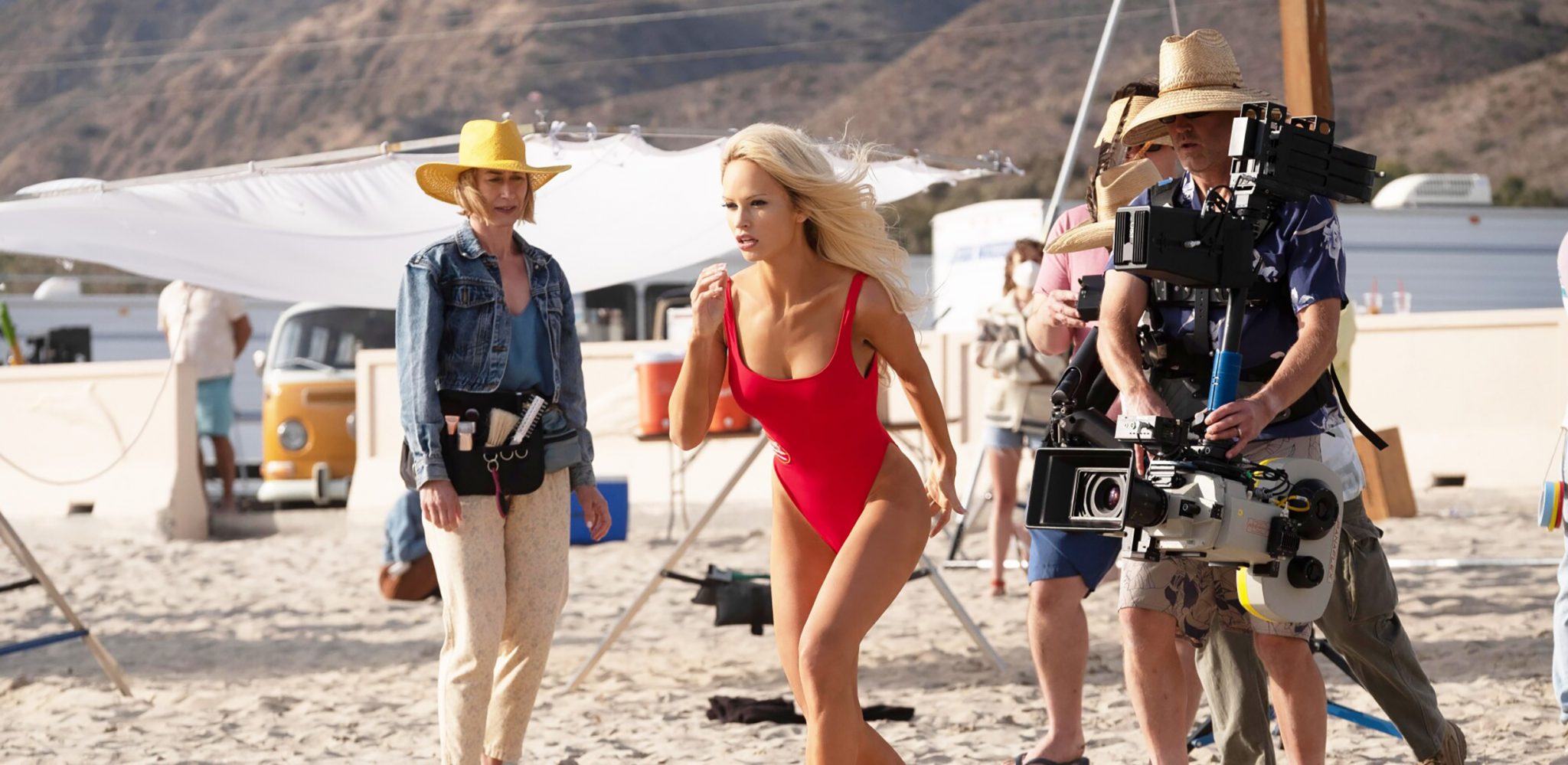Something is missing in Pam and Tommy: a sensuality and savviness that is impossible to mimic with lip-liner or a wig
“Women like you, Pam,” an actor playing Hugh Hefner tells an actor playing Pamela Anderson in Pam and Tommy (2022), “come around once in a generation.” It is possible they come around even less frequently than this, given that whoever cast Hulu’s new, divisive series about Pamela Anderson and Tommy Lee’s sex tape – stolen in 1995, then released illegally on the internet – felt it necessary to enlist a woman who is more or less her polar opposite to play her, and then spend five hours a day burying that woman under make-up, heavy spray-tan and prosthetics in order to close the space between them. If the hair and make-up team who skilfully made Lily James – English, sylphlike, terribly posh, best known for appearing in period dramas, and unthreateningly lovely enough to have played the nameless second Mrs de Winter in Ben Wheatley’s 2020 adaptation of Rebecca – into Pamela Anderson do not receive every award the industry could offer them for their achievement, then there is officially no justice in the world. To look at, James is Anderson, a spooky carbon-copy of a figure who had never once aspired to look ‘natural.’ Audiences who adore a transformation will no doubt be thrilled, and James does a fine job of making Anderson feel human underneath the latex. Something, though, is missing, impossible to recreate with lip-liner or a wig, or by studying YouTube videos to get her tics and mannerisms just right. I have no idea whether the real Hugh Hefner ever told the real Pamela Anderson that women like her did not come around too often, but I’d guess that if he did, it would be this particular quality he was referring to: a kind of outsized sensuality, paired with a savviness about her image that made it almost impossible to render her the butt of any joke.

Pamela Anderson, however many times she has been married, has not been and never will be anybody’s nameless second Mrs de Winter, even when she wears her hair cropped short enough that she believes she resembles ‘Anderson Cooper, or […] a Q-Tip’. The story of her discovery is so all-American that it is easy to forget she’s not American at all: captured on the jumbotron at a football game in her native Canada in 1989, wearing a T-shirt advertising Labatt beer, she unwittingly revealed her face and body to be perfectly adapted for the screen without so much as having to audition. If cinema did not benefit to quite the same degree as it did from the day a teenage Lana Turner was first scouted at a soda counter, Anderson still quickly, cleverly parlayed her golden, more-American-than-American beauty into a modelling gig for Labatt, an extensive Playboy shoot and a career in television off the back of that first brief flash of exposure.
The phrase ‘they don’t make ‘em like that anymore’ invariably crops up when we talk about bona fide golden age Hollywood stars, making it unsurprising that a level of scepticism has surrounded the news that, for instance, Rooney Mara will be playing Audrey Hepburn, or that Chris Evans will be playing Gene Kelly. In a sense, though, they do not really make them like Pamela Anderson now, either. Absolute fidelity should be the goal of a celebrity impressionist; it need not necessarily be the goal of an actor who has been cast as a real person, which is why Cate Blanchett, with her hoarse, ethereal swagger, made the best Bob Dylan of the seven characters inspired by the singer-songwriter in Todd Haynes’s I’m Not There (2007). More important than exactly resembling the celebrity at hand is the ability to channel, medium-like, their particular charisma, offering a reminder to the audience as to why they became so famous in the first place.

In truth, the space between the real Pamela Anderson and the one played by Lily James may have more to do with the way the creators of Pam and Tommy built the show itself than it does with James’s performance. It is a morality tale that rubbernecks; a tragedy about a real woman’s real sense of violation at her sex tape being circulated that nevertheless also includes scenes of an actress made up as her having very explicit sex; an attempt to call attention to the sexism of recent cultural history that forces its female lead to simper, coo and giggle her way through at least its first four episodes. This depiction of Anderson as an erotic naïf, a babe in the woods whose very babeliness meant she was fated to be fleeced by horrid men, does not ring entirely true with my memory of her as a public figure.
The theft and the distribution of that sex tape was, it is clear now, a genuine sex crime, leaving Anderson completely traumatised. Still, if the makers of this show wanted to re-contextualise her as a feminist icon, it might have been more effective if they’d done so by depicting her as cannier, sharper, something other than a perpetual victim of a patriarchal system. An episode entitled Pamela in Wonderland shows her getting her start in soft-core and appearing dazed and overwhelmed, but stops shy of showing the point just one week later when the real Anderson claims she’d got so used to being naked that ‘they had to stop [me] before I walked out of the studio door nude’; a scene in one of the goofier, more antic early episodes directed by I, Tonya’s Craig Gillespie seems to make a bimbo joke out of her favourite movies being mainstream rom-coms, but while I am sure she does love Sleepless in Seattle (1993), she is also an avowed fan of Antonioni’s L’Avventura (1960).

Flattening Anderson into a soft and sympathetic outline, Pam and Tommy manages to nix the minxish joie de vivre that made her, however much silicon she added to her body, feel entirely real. There is, too, the issue of the series’ iffy relationship with consent – however much its creators claim to want to empower Pamela Anderson, she herself has disavowed the entire project. ‘Pamela has no regrets about her life,’ a source told Entertainment Tonight earlier this month, ‘but the only thing she would probably erase is this burglary. She feels so violated to this day. It brings back a very painful time for her.’ After reading this, I turned the statement ‘Pamela has no regrets about her life’ over and over in my head. Those seven words, even if they had been provoked by something awful, somehow managed to distil the real Pamela Anderson better than all eight hours of the Hulu series had.
